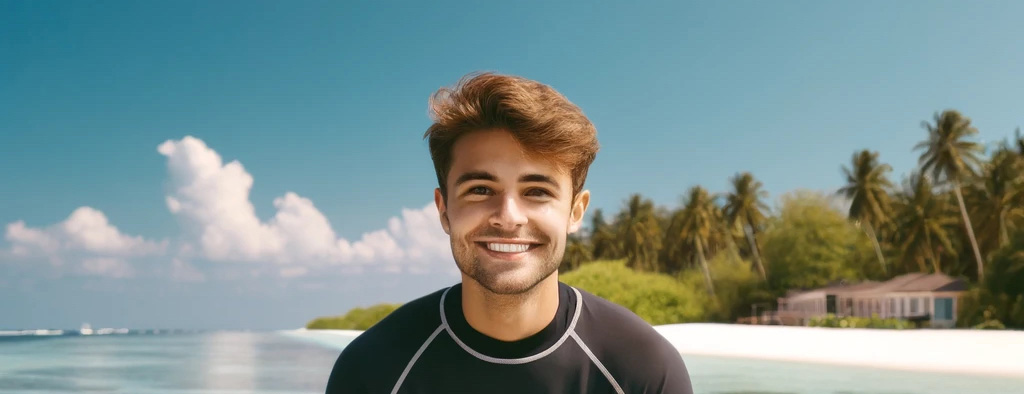
Ideally, neutral buoyancy should be maintained throughout the entire dive. This will help you maintain good trim and avoid unintended contact with the bottom or reef.
Neutral buoyancy is achieved by balancing all of the elements of the buoyancy equation: the BCD, weights, lungs (breathing) and movement. Before leaving the descent line, check to make sure everything is right.
The lungs and the BCD are both used to regulate depth. If you find you are negative, and moving deeper, take a breath to help slow yourself, if you are still descending, add more air to the BCD in small increments. You will know you’ve achieved true neutral buoyancy when your breathing creates minor depth variations. The relationship between the use of your BCD and your breathing is important to understand and use appropriately for depth control.
Avoid using your fins to maintain a certain depth. Your fins should be used for propulsion, not to determine or establish your depth.
The pendulum and hovering exercises introduced in the SNSI Open Water Diver program are ideal skills to practice and to help perfect your buoyancy control. These exercises will be reviewed towards the end of this chapter.
Good buoyancy control is one part of the equation; good trim is the other. Trim is the diver’s positioning within the water. To have, and maintain optimal trim, a diver must be optimally weighted with the weight placed in the correct location. This allows the diver to float horizontally, with the fins slightly elevated above the body.
A diver that is unable to naturally maintain this position will inevitably move his hands and feet in an ongoing effort to try to maintain horizontal positioning. This creates additional water resistance, and results in the diver breathing more gas than necessary, which can lead to additional problems.
A diver that has achieved neutral buoyancy and proper trim can move through the water with practically no effort. He can put his hands in a comfortable position and use his fins to glide through the water, making small adjustments in kicking force to speed up, slow down or stop.
With each inhalation and exhalation, the diver will slightly ascend and descend. These variations due to lung volume can be used to our advantage. For example, if we need to ascend a little bit to avoid an obstacle, we can breathe in slightly more than normal, and rise. To descend back to our original depth, we exhale normally. However, at no point should a diver ever hold their breath.
Never hold your breath underwater for any reason nor under any circumstance.